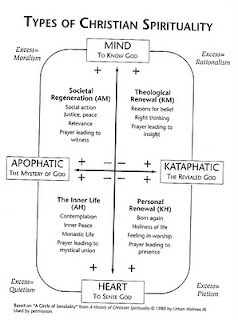Towards Vision ... 1/4
 Vision is quite a loaded word in church circles; I wonder whether sometimes it can be totally misused by leaders who want to do their thing. "This is God's vision for this place or area ... God has told me blah blah blah... God's will is that we...." is the ultimate in top trump cards; unbeatable like the TVR Cerbera Speed 12 the card to beat all cards.
Vision is quite a loaded word in church circles; I wonder whether sometimes it can be totally misused by leaders who want to do their thing. "This is God's vision for this place or area ... God has told me blah blah blah... God's will is that we...." is the ultimate in top trump cards; unbeatable like the TVR Cerbera Speed 12 the card to beat all cards. I wonder if there is a balance between waiting to zapped divinely with the winning formulae and going all corporate 5 year plan - certainly there is a responsibility for us to not drift into vision while not being too prescriptive. When we as church start talking about vision, care needs to be taken, agendas need to be teased out and tested.
Nunhead SA where we worship corporately, has started a process of 'vision casting' and here's the difference there is a sense of a shared accountability, journey and responsibility. Self-preoccupied agendas struggle in such a healthy environment.
Nunhead SA where we worship corporately, has started a process of 'vision casting' and here's the difference there is a sense of a shared accountability, journey and responsibility. Self-preoccupied agendas struggle in such a healthy environment.
Stuart Murray-Williams asks an interesting question that can help in any thought process regarding church direction. "What kinds of churches might leavers rejoin and not leave in the first place?"
- Churches where God is at the centre, rather than the minister, programme or growth targets.
- Churches that nurture authentic friendships rather than insipid 'fellowship' or institutional belonging.
- Churches that are self-critical, alert to destructive interpersonal dynamics and that are working towards healthy community practices.
- Churches that treat adults as adults and encourage spiritual development rather than spoon-feeding their members.
- Churches that foster dialogue rather than monologue and participation rather than performance.
- Churches that welcome questions, eschew simplistic answers and affirm the dimension of mystery in authentic spirituality.
- Churches that encourage expressions of doubt, anger and lament as well as joyful certainty.
- Churches that are attuned to the pressures of daily life and do not place unrealistic demands on their members.
- Churches that engage creatively and sensitively with contemporary culture and social issues.
- Churches that equip members for the world of work and discipleship beyond the congregation.
- Churches that embrace a holistic understanding of mission and have realistic expectations as marginal communities in post-Christendom.Pp 55-56
Murray, S (2005) Church after Christendom. Pasternoster
I guess what we need to do with such a list is to ask "How can we be a church that can...?"

Comments
I guess the trouble is that people drift out before that good time comes and often the congregation has lost any sense of bringing people to that good time, because they associate planting (locally) with short missional reach and transfer growth.
As part of my lenten journey I am going to try to work out how to be that church.
Very inspiring.